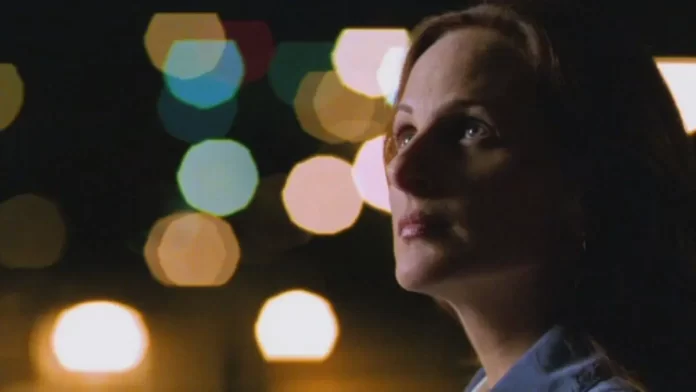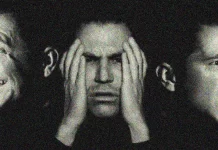A groundbreaking documentary that challenges our conventional understanding of reality, “What the Bleep Do We Know?” take us to the fascinating realms of quantum physics, neuroscience, and consciousness. Released in 2004, this thought-provoking film directed by William Arntz, Betsy Chasse, and Mark Vicente continues to captivate audiences worldwide. By blending expert interviews, visual effects, and narrative storytelling, “What the Bleep Do We Know?” offers a unique exploration into the mysteries of existence and how our thoughts and perceptions shape our reality. However, amidst its popularity, the documentary has also faced criticism regarding its scientific accuracy and reliance on pseudoscience. In this article, we will delve into the claims made in the documentary and explore the validity of the criticisms surrounding its scientific accuracy.
Contents
What is “What The Bleep Do We Know”?
“What the Bleep Do We Know!?” is a documentary film released in 2004 that explains the relationship of science, spirituality, and consciousness by fusing elements of documentary-style interviews, dramatic re-enactments, and animation. The movie was helmed by William Arntz, Betsy Chasse, and Mark Vicente, and it was released in 2004.
The film’s central thesis is based on the idea that reality is subjective and subject to the thoughts, opinions, and emotions of those experiencing it. It challenges conventional conceptions of reality and explores the potentialities of how our thoughts and consciousness might impact our experiences by presenting a synthesis of scientific theories, quantum physics, and philosophical notions.
Many scientists, philosophers, and spiritual gurus are interviewed for the movie and offer their insights on subjects including quantum mechanics, neurology, biology, and psychology. Additionally, it includes fictional tales that portray the struggles a Marlee Matlin-portrayed photographer named Amanda faces as she undergoes personal and spiritual development.
When it was first released, “What the Bleep Do We Know!?” attracted a lot of attention and became a favorite of the people. It’s important to note, too, that the movie has come under fire from several scientists for misrepresenting or distorting scientific principles and for endorsing pseudoscientific notions. It’s crucial to approach the film with a critical mentality and take the scientific consensus on the subjects it addresses into consideration. We have discussed in detail all the topics mentioned in this documentary.
Chapters Of This Documentary
Unveiling the Quantum World:
In this chapter, the documentary explores the shift from Newtonian physics to quantum mechanics, revealing the groundbreaking discoveries that challenge our traditional understanding of the universe. While the film does present intriguing ideas about the observer effect and the existence of multiple realities, some scientists argue that it oversimplifies complex quantum concepts and misrepresents scientific theories for dramatic effect.
Neuroscience and Perception:
Examining the power of perception in shaping our experience, this chapter delves into the relationship between neuroscience and our subjective reality. While the documentary sheds light on the concept of neuroplasticity and its potential for behavioral changes, critics argue that it fails to distinguish between evidence-based research and speculative claims. The oversimplification of neuroscientific findings may mislead viewers into believing that changing their thoughts alone can lead to instant and miraculous transformations.
Consciousness and the Mind-Body Connection:
This chapter delves into the intricate relationship between consciousness and the physical body. While the film attempts to bridge science and spirituality, critics argue it relies heavily on pseudoscientific claims and New Age philosophies. The documentary’s portrayal of the mind-body connection, while intriguing, often lacks scientific rigor and fails to acknowledge the complexity of the topic.
Breaking Free from Limiting Beliefs:
The documentary invites viewers to overcome conditioning and expand their awareness in this chapter. While the film promotes positive thinking and visualization as transformative tools, critics argue that it oversimplifies the challenges of personal growth and fails to address the systemic and external factors that can limit an individual’s opportunities for change. The documentary’s emphasis on personal responsibility may overlook the structural inequalities present in society.
Living Beyond the Illusion:
This chapter encourages viewers to transcend the boundaries of time and space, exploring concepts that challenge our traditional understanding of reality. While the film’s exploration of interconnectedness and the potential for personal transformation is intriguing, some critics argue that it veers into metaphysical and pseudoscientific territory. The lack of concrete evidence and reliance on speculative theories may undermine the documentary’s credibility.
Examining the Quantum World
The documentary explores the realm of quantum physics, presenting ideas such as the observer effect and the existence of multiple realities. Critics argue that the film oversimplifies complex quantum concepts and misrepresents scientific theories. The lack of scientific consensus on the interpretation of quantum mechanics raises questions about the accuracy of the information presented.
Analyzing Neuroscience and Perception
The film delves into the relationship between neuroscience and perception, highlighting the power of thoughts and emotions in shaping our experiences. However, critics contend that the documentary fails to provide a balanced view of the scientific research in this field. It often relies on anecdotal evidence and cherry-picks studies to support its claims, neglecting the broader scientific consensus.
Evaluating Consciousness and the Mind-Body Connection
The documentary explores the connection between consciousness and the physical body, integrating scientific and spiritual perspectives. However, critics argue that it ventures into pseudoscientific territory by making unsubstantiated claims and promoting New Age philosophies. The lack of empirical evidence undermines the credibility of these assertions.
Questioning Limiting Beliefs
The film encourages viewers to challenge their limiting beliefs and embrace personal responsibility for their reality. While positive thinking and visualization can benefit, critics assert that the documentary oversimplifies complex psychological processes and neglects the influence of external factors. It may create unrealistic expectations and place an undue burden on individuals.
Addressing the Controversy
The pseudoscience accusations surrounding “What the Bleep Do We Know?” stems from concerns about the accuracy and misrepresentation of scientific concepts. It is crucial to approach the documentary with a critical mindset and engage in further research to discern fact from speculation. While the film has sparked conversations and expanded people’s perspectives, it is essential to distinguish between scientifically supported claims and unfounded assertions.
Conclusion
“What the Bleep Do We Know?” serves as an eye-opening journey into the depths of perception and reality, challenging our preconceived notions of how the universe operates. However, amidst its thought-provoking content, the documentary has faced criticism for its scientific accuracy and reliance on pseudoscience. While it presents intriguing ideas and sparks conversations, it is essential to approach the film with a critical mindset, distinguishing between evidence-based research and speculative claims. By engaging in a balanced exploration of the topics presented, viewers can gain valuable insights from this documentary while acknowledging the limitations and controversies surrounding the documentary.
The controversy surrounding “What the Bleep Do We Know?” arises from the clash between its thought-provoking ideas and the scientific community’s skepticism towards its claims. While the documentary offers an intriguing exploration of perception, consciousness, and reality, it has been criticized for its reliance on pseudoscientific explanations and the misrepresentation of scientific theories. To fully evaluate the documentary, viewers should critically analyze the scientific evidence presented and seek additional sources to form a well-rounded understanding. You can also read this book “What the Bleep Do We Know”.
Also, Read these articles:
- Existence: Is Your Reality a Complex Computer Simulation?
- Is the universe a computer simulation? – Simulation Theory explained
- Hyperreality: The Fusion of Physical and Virtual Worlds
- Virtual Worlds: The Next Frontier in Technology
- The Internet of Bodies: Transforming Lives or Crossing Ethics?
- Digital Physics: Exploring the Universe as a Computational System
- Artificial City: The Future of Artificially Intelligence Society
- Augmented Reality: Technologically Augmented Version of the Real World
- Everything We See Is Actually From the Past
- Theory of Knowledge: Depths of Understanding Or Wisdom
Sources
- Vicente, Mark, Betsy Chasse, and William Arntz. “What the Bleep Do We Know!? (2004).” Beverly Hills, Calif.: 20th Century Fox Home Entertainment (2005).
- Arntz, William, Betsy Chasse, and Mark Vicente. What the Bleep Do We Know!? TM: Discovering the Endless Possibilities for Altering Your Everyday Reality. Editorial Kier, 2005.
- McBrayer, Justin P., and Dugald Owen. “What Quantum Mechanics Doesn’t Show.” Teaching Philosophy (2016).
- Gorenfeld, John (2004-09-16). “Bleep of faith“. Salon.
FACT CHECK: We strive for accuracy and fairness. But if you see something that doesn’t look right, please Contact us.
DISCLOSURE: This Article may contain affiliate links and Sponsored ads, to know more please read our Privacy Policy.
Stay Updated: Follow our WhatsApp Channel and Telegram Channel.












